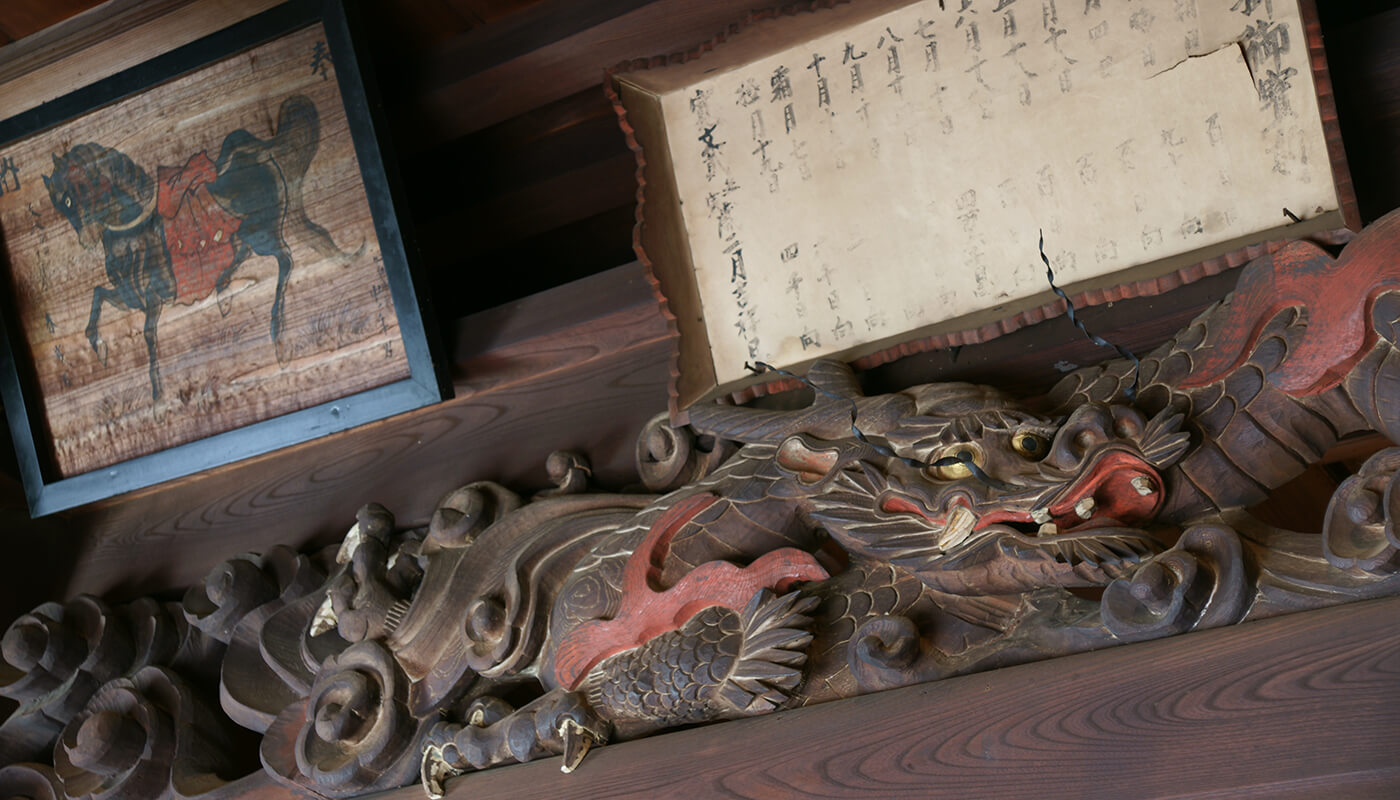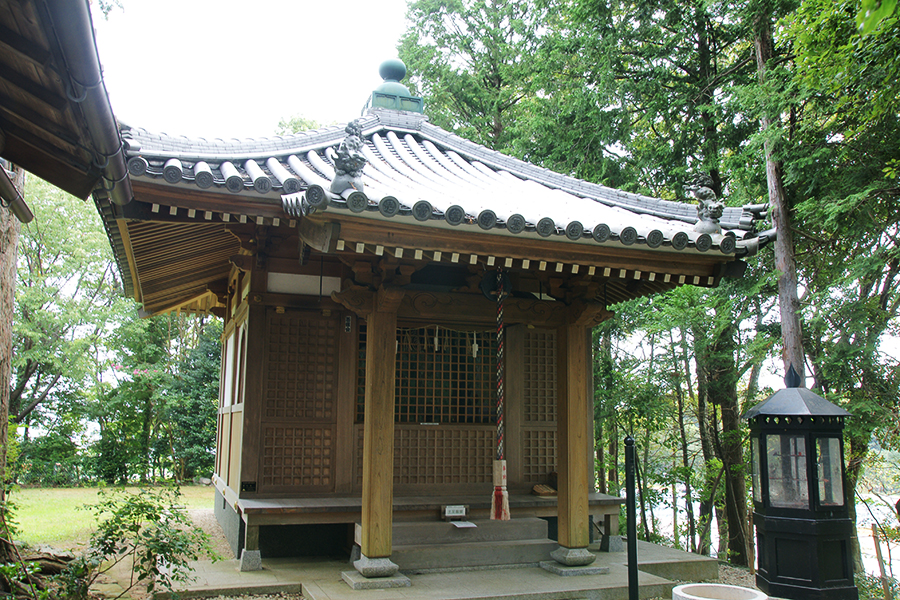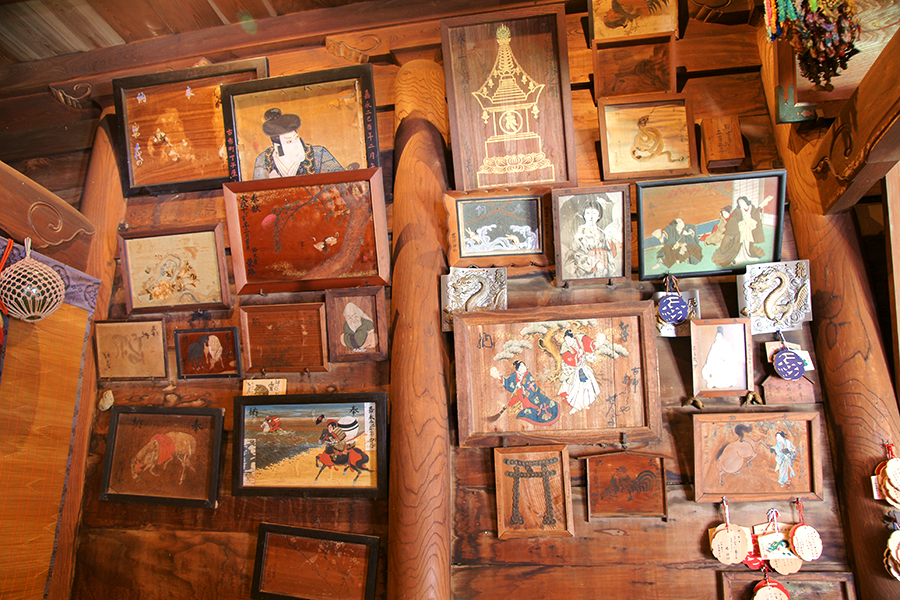Number 3Matsuo Kannon-ji temple
History of the temple
History of Matsuo Kannon-ji temple
According to temple’s records, Matsuo Kannon-ji was built in Nara period (712) by Gyōki – a high priest who came to Mount Matsuo during his pilgrimage to Ise Shrine. This temple does not have branches (matsuji) or associated believers (danka), also it does not belong to any Buddhist sect. Matsuo Kannon-ji is a temple specialized in prayer for divine favors. Its main statue is a miraculous Jūichimen Kannon (Eleven-Faced Kannon), accompanied by Bodhisattva Jizō (Bodhisattva who looks over children, travelers and the underworld) and Bishamon (God of Treasure, Wealth, & Warriors). Many visitors come and pray to them asking for warding off calamities, bringing good fortune and many other favors.
For generations Matsu Kannon-ji was protected by Kitabatake clan, a family of Governors of Ise. After Kitabatake clan was united and changed their surname to Kotsukuri, the temple became their official family temple (ujidera). The Main Hall of the temple is made from Japanese zelkova. It was donated by Kotsukuri Nagasato and constructed 200 years ago in 1820.
In 1998 Kannon Hall was rebuilt thanks to donations gathered from all over the country in a fund-raising campaign organized by local supporters.
10.000 sutra copies in a finial of the roof
During the construction works at the roof of the Main Hall in 1954, 10.000 copies of Lotus Sutra were found inside the finial of the roof. All of them were written by hand and put in 500 boxes. To protect the sutras from bookworms, they were wrapped in oiled paper and sealed in boxes together with tobacco leaves.
The legend of pond dragons that protect the main statue
There is a legend which explains the Mountain name of this temple – Ryūchizan (Dragon pond mountain). The name comes from two ponds behind the Main Hall which are called Futatsu ike (Two Ponds) or Ryū ike (Dragon Ponds). People believe that since ancient times there are two dragons living in them, a male dragon in the eastern pond and a female dragon in the western. Their role is to protect Goddess Kannon enshrined in this temple. According to a legend, 600 years ago in 1403, when the Main Hall was on fire, two dragons protected the Goddess from burning. The male dragon flew down from the sky and while sucking in the flames, he wrapped the statue with his own body. Then the female dragon took water from the pond in her mouth and sprayed on the fire protecting them both from burning.
Since then in the end of every month, monks offer sake, eggs and rice in front of both of the ponds. This is to show their gratitude to the dragons for saving Goddess Kannon on that day.
Because of that legend people started to believe this Kannon has power to protect people from disasters. Also because dragons appearing in the story are male and female, people also believe that the Goddess has power to bind men and women together and grant them children. These beliefs are passed down from generation to generation and even now people still come to pray and ask Kannon and the dragons for protection.
Mount Matsuo – a treasury of tradition and literature
Matsuo Kannon-ji grounds are also visited by people pursuing local culture. This temple is a home for many monuments engraved with poetry, as well as statues of Bodhisattva Jizō, each having its own legend.
Among the most prominent examples of poetry are:
My heart calms down seeing cherry blossoms in a cold evening. Atake Sohaku (Ise, Kawasaki)
In twilight flowers and water give way to each other. Ōnushi Kōu (Ise, Yōkaichiba)
One of the poems is about an old battle ground at Mount Kaibuki (Conch blowing mountain) in Uji Yamada area.
Visiting the remains of enemy’s defense lines, it occurred to me that conch is just a name and the mountain storm is the only thing that blows. Kanamori Tokusui
In the Main Hall there are many colorful votive tablets hanging on the wall. They were offered by the believers and are a precious evidence of Matsuo Kannon-ji’s Kannon being the oldest example of Kannon’s warding off calamities cult. That is why it attracts attention of many local historians.
Especially the votive tablets from the middle of 19th Century have pictures that depict customs of the time. All of them were donated as a prayer and gratitude for granted wish. A tablet offered by a Geisha from Furuichi red light district is very colorful and bewitching. It gives a slight hint of mood of those times. Many other have pictures of dragons and sneaks, which probably were influenced by the temple’s Mountain name – Ryūchizan (Mount of Dragon’s pond)
Seiyōzakki
In the mountain of Matsuoda Kurose village ground stands a Kannon Hall. The land is controlled by Kushimoto clan. Temple number 3 of Mie Saikoku 88 Sacred Grounds Ise Pilgrimage. Main statue of Ryūchizan Matsuo-ji is Eleven-Faced Kannon.
Oh Matsuo, where the light spreading over two ponds. A place where a vow of compassion and mercy still remains.
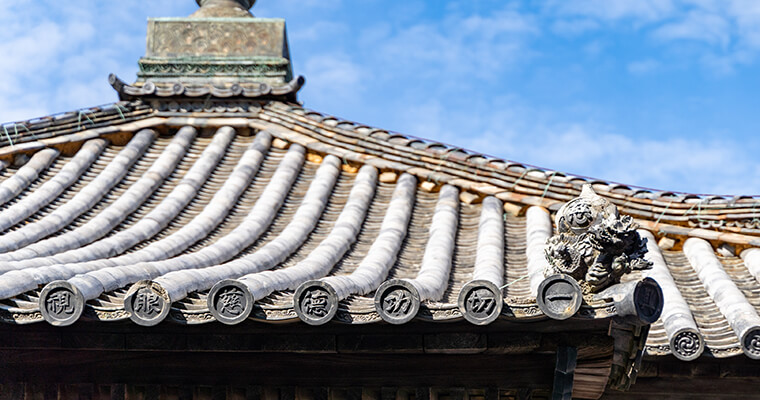
Outline
-
Honorific name
Ryūchizan
-
Temple's name
Matsuo Kannon-ji
-
Sect
Independent
-
Religious service
Jūichimen Kannon
(Eleven-Faced Kannon)
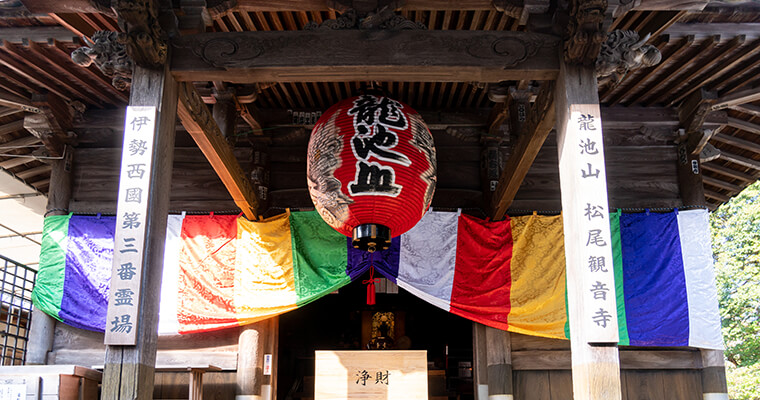
Details
-
Address
Mie Prefecture Ise Kusube-cho 156-6
-
Phone number
0596-22-2722
-
Stamp place
Temple's counter
-
Opening hours
8:00 - 17:00
-
Official website
